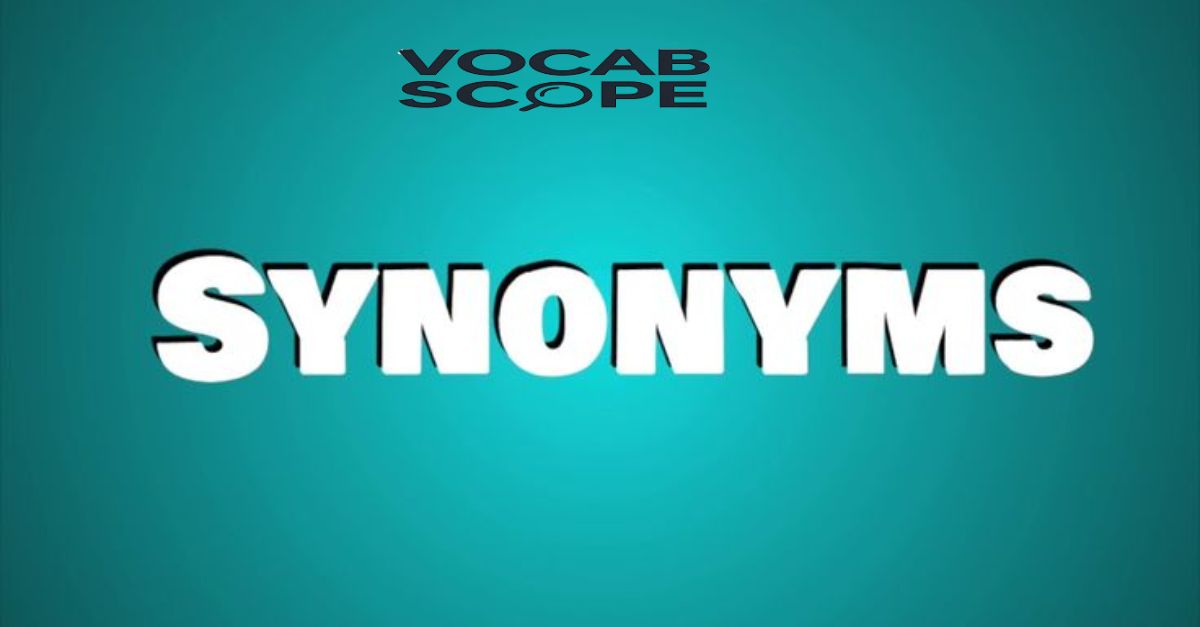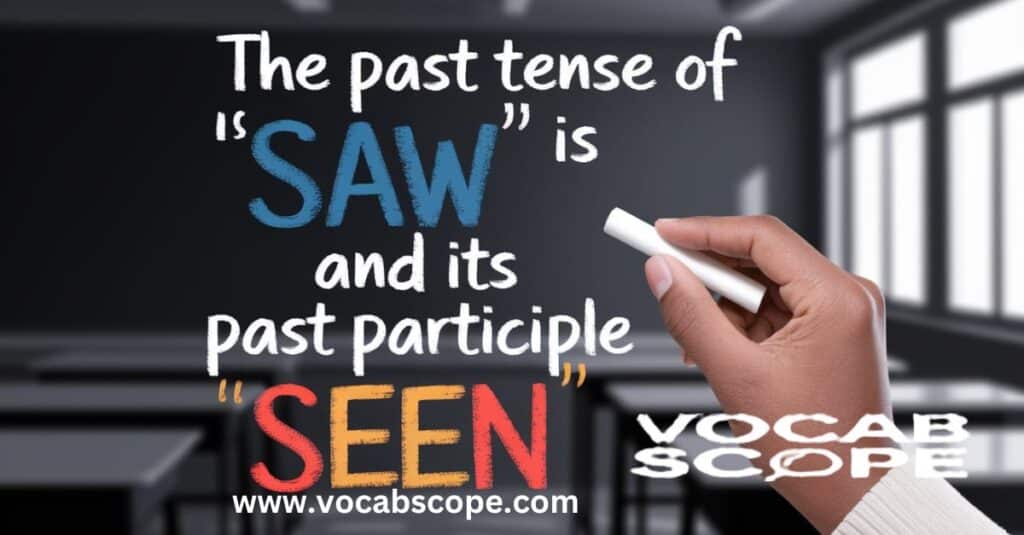Understanding verb tenses is crucial for mastering English grammar. One of the most commonly confused verbs is “see.”
In this article, we’ll dive into the past tense and past participle of “see,” explore how they change, and why these changes are significant. We’ll also highlight common mistakes and provide examples to clarify the usage.
Past Tense of ‘See’
How It Changes:
The past tense of “see” is “saw.” This transformation might seem odd at first glance, but it’s part of what makes English so intriguing. Unlike regular verbs that simply add “-ed” to form their past tense, “see” takes a completely different shape.
For example:
- Present tense: I see a bird.
- Past tense: I saw a bird.
This change applies regardless of the subject:
- He/She/It saw
- We saw
- You saw
- They saw
Read Also: Pre vs Post: Which Prefix to Use?
Why it Matters:
Understanding the correct past tense of “see” is crucial for several reasons:
- Clarity in communication: Using the right tense helps convey your message accurately.
- Storytelling: When recounting past events, the correct use of “saw” adds authenticity to your narrative.
- Professional impression: Proper grammar usage can enhance your credibility in written and spoken communication.
Let’s look at some scenarios to illustrate the importance:
| Scenario | Incorrect | Correct |
| Reporting an incident | “I see the accident yesterday.” | “I saw the accident yesterday.” |
| Describing a past experience | “We see a beautiful sunset last night.” | “We saw a beautiful sunset last night.” |
| Talking about a missed opportunity | “I see the job posting, but it was too late to apply.” | “I saw the job posting, but it was too late to apply.” |
Past Participle of ‘See’
How It Changes:
The past participle of “see” is “seen.” This form is used in perfect tenses and passive constructions, often accompanied by helping verbs like “have,” “had,” or “was.”
Examples:
- Present perfect: I have seen that movie.
- Past perfect: She had seen the warning signs.
- Passive voice: The suspect was seen leaving the building.
Why it Matters:
The past participle “seen” plays a vital role in expressing completed actions or states. Here’s why it’s important:
- Expressing experiences: Use “have/has seen” to talk about life experiences.
- Indicating sequence: In past perfect tense, “had seen” shows an action completed before another past action.
- Passive constructions: “Seen” helps form passive sentences, shifting focus to the object of the action.
Consider these examples:
- “I’ve seen this show before.” (Present perfect – expressing a past experience relevant to the present)
- “By the time we arrived, the sun had already seen its peak.” (Past perfect – indicating sequence)
- “The rare bird was seen by birdwatchers from all over the country.” (Passive voice – emphasizing the object)
You will Like: Pre-Existing or Preexisting: Which One is Correct?
Synonyms for the verb “see”:

- Observe
- View
- Watch
- Gaze
- Notice
- Perceive
- Spot
- Glance
- Examine
- Witness
- Discern
- Survey
- Behold
Common Mistakes to Avoid
Don’t Mix Up Words:
One of the most frequent errors is confusing “saw” and “seen.” Remember:
- Saw is the simple past tense and can stand alone in a sentence.
- Seen is the past participle and needs a helping verb.
❌ Incorrect: “I seen a shooting star last night.” ✅ Correct: “I saw a shooting star last night.”
❌ Incorrect: “Have you saw the new superhero movie?” ✅ Correct: “Have you seen the new superhero movie?”
Keep Tenses Right:
Consistency in tense is key to clear communication. Avoid switching tenses unnecessarily within the same context.
❌ Incorrect: “Yesterday, I see a car accident and have called the police.” ✅ Correct: “Yesterday, I saw a car accident and called the police.”
To help you master these distinctions, here’s a handy table:
| Form | Example | When to Use |
| See | I see the problem. | Present tense |
| Saw | I saw the problem yesterday. | Simple past tense |
| Seen | I have seen this problem before. | Past participle (with helping verbs) |
“The difference between the right word and the almost right word is the difference between lightning and a lightning bug.” – Mark Twain
This quote beautifully illustrates why precision in language matters. Using “saw” when you mean “seen” (or vice versa) can significantly alter the meaning of your sentence.
Real-World Applications
Understanding the nuances between “saw” and “seen” isn’t just about acing your English exams. It has practical applications in various aspects of life:
- Professional Writing: In business emails, reports, or presentations, using the correct form enhances your credibility.
- Storytelling: Authors and journalists rely on precise language to craft compelling narratives. The difference between “I saw a ghost” and “I had seen a ghost” can dramatically change the tone and timing of a story.
- Legal Context: In legal documents or testimonies, the distinction between “saw” and “seen” can be crucial. “I saw the suspect” carries a different weight than “I had seen the suspect before.”
- Academic Writing: Scholars need to articulate their research findings accurately. Using the correct tense helps in describing methodology and results clearly.
You Will Like It: What’s the Plural of Software? Is it Software or Softwares?
Cultural and Historical Context
The irregular verb “see” and its forms have a rich linguistic history. English, being a Germanic language with significant Romance language influences, has retained many irregular verbs from its Old English roots. “See” is one such verb that has resisted regularization over centuries.
- Old English: sēon (infinitive), seah (past tense), sewen (past participle)
- Middle English: seen (infinitive), sauȝ (past tense), seyn (past participle)
- Modern English: see (infinitive), saw (past tense), seen (past participle)
This evolution showcases the resilience of irregular verbs in English, despite the language’s general trend towards simplification.
Practical Exercises
To reinforce your understanding, try these exercises:
- Fill in the blanks with the correct form (see/saw/seen):
- I _ a great movie last night.
- Have you ever _ the Northern Lights?
- She _ the warning signs but ignored them.
- Correct the following sentences:
- I have saw that painting in a museum.
- They seen the concert last week.
- We have see the error of our ways.
- Write a short paragraph about a memorable experience using both “saw” and “seen” correctly.
Conclusion
Understanding the past tense and past participle of “see”—“saw” and “seen”—is crucial for accurate English usage. These forms help express different times and aspects of actions, making communication clearer.
Avoid common mistakes by remembering their specific uses: “saw” for simple past and “seen” for perfect tenses and passive voice. Mastering these forms will enhance your grammar skills and help you convey your ideas more effectively.
Quick Reference Table
| Base Form | Past Tense | Past Participle |
| see | saw | seen |

“Robert Henry is an experienced blogger with a passion for language and education. His insightful posts on Vocab Scope offer readers valuable tips on vocabulary and grammar. With a background in linguistics and a knack for clear, engaging writing, Robert is dedicated to helping others enhance their communication skills.”






